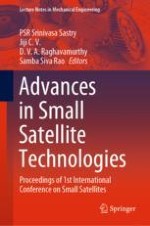2020 | OriginalPaper | Buchkapitel
Real-Time Autonomous Navigation Scheme for Pointing Small Data Relay Satellite to LEO Using NavIC and GNSS Measurements
verfasst von : Monica Dantuluri, Ishita Ganjoo, Vinod Kumar
Erschienen in: Advances in Small Satellite Technologies
Verlag: Springer Singapore
Aktivieren Sie unsere intelligente Suche, um passende Fachinhalte oder Patente zu finden.
Wählen Sie Textabschnitte aus um mit Künstlicher Intelligenz passenden Patente zu finden. powered by
Markieren Sie Textabschnitte, um KI-gestützt weitere passende Inhalte zu finden. powered by
